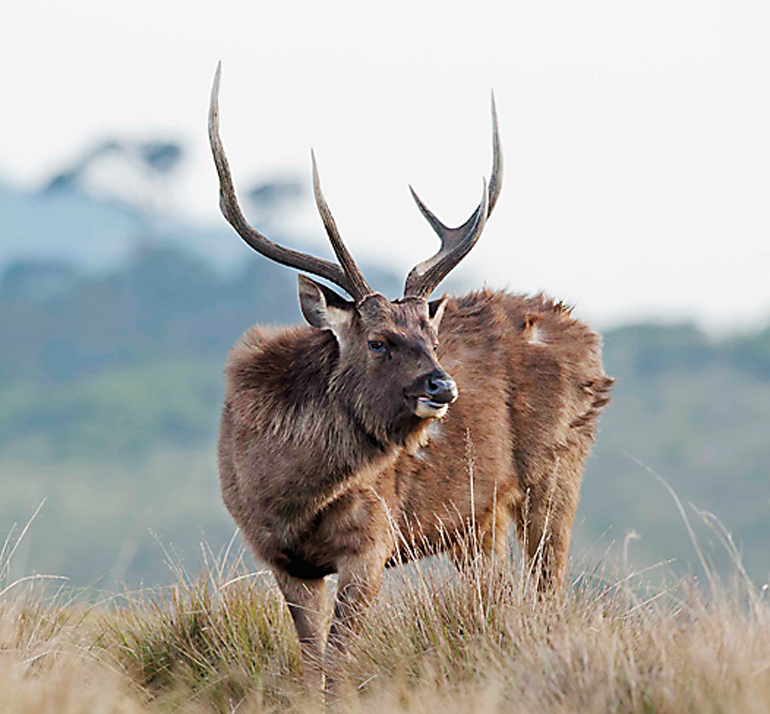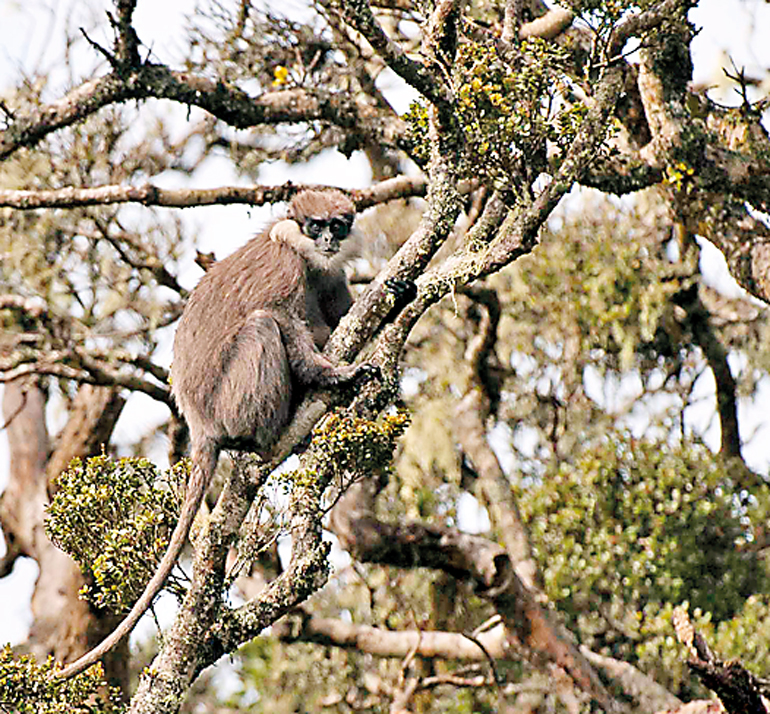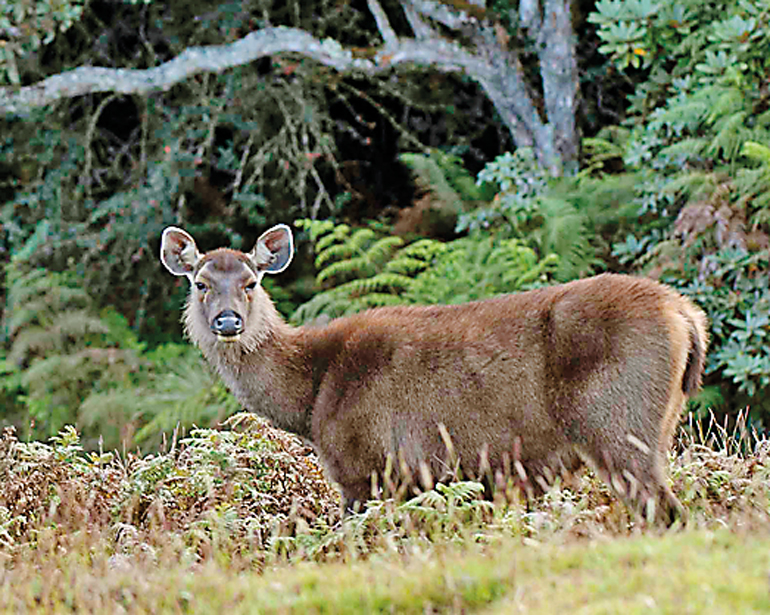Tuesday Apr 16, 2024
Tuesday Apr 16, 2024
Saturday, 30 July 2016 00:10 - - {{hitsCtrl.values.hits}}

Horton Plains, a tiny piece of real estate in the heart of the country
By Shiran Illanperuma
“Conservation means different things to different people,” says Dr. Rohan Pethiyagoda, as he kicks off a speech on conserving the  unique and varied indigenous flora and fauna of Sri Lanka’s iconic Horton Plains.
unique and varied indigenous flora and fauna of Sri Lanka’s iconic Horton Plains.
Pethiyagoda currently serves as Chairman of the Sri Lanka Tea Board, however he is perhaps better known for penning five books and over 80 papers relating to conservation of Sri Lanka’s biodiversity.
“To me, conservation amounts to what we do to allow evolutionary processes to proceed as if there were no human influence. It’s an idealistic and perhaps unpractical notion, but it’s the only way I know to really preserve this country’s biodiversity,” says Pethiyagoda.
Pethiyagoda categorises conservation into two key facets – enforcement and protection, drawing parallels with policing and the legal system. Enforcement of course refers to actively preventing human-led destruction such as deforestation or poaching, however Pethiyagoda is interested in a more technical and managerial side of conservation.
“Looking at Horton Plains as a critically-ill patient is good analogy. The patient’s life depends on the skill of doctors and nurses who diagnose and prescribe treatment; this is analogous to the conservative biologists. However the key stakeholders are actually the relatives of the patient – that’s us, the public. We are the key constituencies whose job it is to deliver conservations outcomes,” explains Pethiyagoda.
Pethiyagoda describes the Horton Plains as a tiny piece of real estate in the heart of the country. Unlike the low country, the plains don’t feature plants with compound leaves or buttressed roots. The presence of woolly climbers is also largely absent, making the plains a fairly unique landscape within the island with a very specific set of flora and fauna.
Human settlement in the Horton Plains is estimated to go as far back as 10,000 to 30,000 years. Even today visitors to the plains are likely to find primitive tools such as sharpened rocks scattered around the area.
 Early human intervention
Early human intervention
Pethiyagoda notes that the plains themselves feature a fair amount of grassland, all of which borders along riverbanks. These grasslands are, according to research, the result of ancient human activity and the process of burning away forest to provide fertile grasslands for cattle feeding grounds. Thus, relatively speaking, the Horton Plains grasslands are a new phenomenon.
A consequence of this early human activity is that the levels of cloud cover and mist over the forest has risen. Considering that the trees in the Horton Plains have adapted to absorb the moisture from the air through their leaves, this has had a negative affect on the growth of the forest.
Says Pethiyagoda, “The last great fire happened 120 years and we can get some idea from that how long lasting these changes are. It takes centuries for wildlife to recover from human intervention.”
Invasive species
More recent Government policy of attempting to cultivate potatoes in this grassland has had further disastrous effects, says Pethiyagoda. This cultivation lead to the introduction of a number of exotic foreign grasses which in turn have supported a growing population of Sri Lankan sambar deer.
“These animals are tame and as such people can feed them and interact with them. The tourists are quite fond of them but they can be very destructive, particularly with their tendency to destroy tree barks by rubbing their antlers on them,” said Pethiyagoda.
Pethiyagoda argues that the right thing to do in order to stem the growing sambar population as well as the reduced mist and forest cover is to restore indigenous strains of grass to the area. Says Pethiyagoda, “People assume this larger deer population can be dealt with by leopards but examination of their faeces shows that sambar form a very small part of their diets.”
Another invasive species in the plains, according to Pethiyagoda are a breed of Central American shrubs, which grow to about two feet. Pethiyagoda says that this breed “is so aggressive that it shades out everything under it, preventing a single native plant from growing under it”.
“We need to find ways of getting rid of foreign and invasive species. The Central American shrubs are just one of 50 or so species of alien plants in the plains. The good news is most of these require a lot of sunlight and so they have been pushed to the forest edge. We can use this knowledge to craft a strategic response and restore the area’s original biodiversity,” said Pethiyagoda.
“The truth is we don’t really know what the pioneer species were in these plains. No one did any research in the ’60s and ’70s so we have no idea. But things have changed and we’re beginning to get some idea now. Tree ferns were the original pioneer species according to an old picture that was recovered. Especially at the site of old landslides, we notice the growth of masses of tree ferns from the open soil,” he added
A looming threat
 While addressing the issue of early human interventions and foreign species seems manageable given sufficient political will and resources, Pethiyagoda emphasises that the looming threat and one that requires mobilisation on a far larger scale is global warming.
While addressing the issue of early human interventions and foreign species seems manageable given sufficient political will and resources, Pethiyagoda emphasises that the looming threat and one that requires mobilisation on a far larger scale is global warming.
Says Pethiyagoda, “We have seen a great deal of forest canopy, with 400- to 500-year-old trees tragically dying in our generation. This has been observed since the ’70s and it has stumped many researchers. However research last year finally revealed the culprit: the growing acidity of the ambient mist water.”
Indeed studies done suggest that leaves expose to an acidic PH of 3.9 will stop photosynthesising (the process by which plants create their energy) and eventually die off. This has already happened to around 1,000 acres of forest in the Horton Plains.
However, acidity is not just limited to the mist and rain water. The ground water too is poisoned, according to research. The exact sources of these pollutants is unknown but plants which readily absorb nutrients such as magnesium, calcium, sulphur and nitrogen are highly susceptible to even minute changes in the acidity and chemical composition of their water supply.
Pethiyagoda speculates, “This is not just from local industrial effluence as Sri Lanka has not yet reached such high levels of industrialisation. These could be the result of pollutants being blown in from larger countries like India and China.”
Healing the patient
Despite the copious amounts of research that now exists and continues to grow, Pethiygoda notes that the biggest challenge is taking the message to the public and triggering a national discourse on the very vital issues of conservations. Indeed making such a topic relevant to the everyday lives of Sri Lankans is no easy task.
Says Pethiyagoda, “As citizens we are often quite critical at the pace of this country’s development. Yet our average GDP is more than double that of India at over $ 3,000 a year. Odds are that this will increase exponentially in the coming years and so we have a very small window left. Historically every country that has crossed a GDP of $ 6,000 a year has lost large portions of its forests, forcing governments to undertake radical and expensive rehabilitation projects.”









